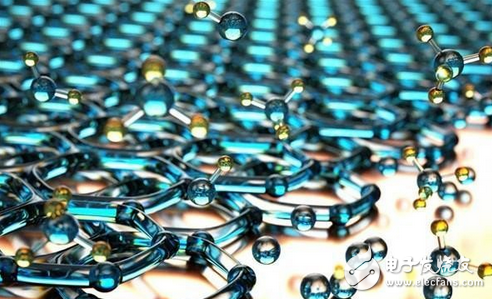The battery is the heart of an electric car. Despite the current promotion of electric vehicles in the country, short-boards such as short cruising range and long charging time still hinder the large number of electric vehicles entering the homes of ordinary people. Nowadays, more and more research institutes and automobile companies are developing a new generation of super batteries to solve many problems in the power battery.
The "king of new materials" graphene, which has been highly anticipated, is always on the topic. Some time ago, the graphene battery developed by the research team of the Shanghai Institute of Ceramics of the Chinese Academy of Sciences has aroused widespread concern. The research team led by researcher Huang Fuqiang collaborated with Peking University and the University of Pennsylvania to synthesize a high-performance supercapacitor electrode material, nitrogen-doped ordered mesoporous graphene. The material has excellent electrochemical energy storage characteristics, and it can be recharged more than 50,000 times in addition to ultra-fast charge and discharge, which is expected to bring revolutionary changes to the battery industry. The results were published in the American journal Science.

"Super battery" is optimistic about graphene
"From the day the electric car was born, scientists have been exploring various new materials and technologies to improve the battery life." Dr. Wang Tao from the New Energy Vehicle Research Center of Hebei University introduced that electric vehicles have a history of more than 100 years. It is half a century before the fuel car.
It is understood that the history of electric vehicles can be traced back to 1834, when the Scottish Robert Anderson made the first electric car, which was driven by a set of non-rechargeable dry batteries and could only travel a short distance. In 1881, the French engineer Gustav Truff invented an electric vehicle powered by a rechargeable battery, a lead-acid battery. From the end of the 19th century to the beginning of the 20th century, electric vehicles entered the golden age of development. Electric vehicles manufacturing companies appeared in France, the United Kingdom and the United States. Electric vehicles once occupied 40% of the automobile market. However, after the 1920s, the internal combustion engine technology was continuously updated, and the fuel vehicle mileage was three times that of the electric vehicle, and the use cost was low... In this context, the electric vehicle quickly disappeared from the European and American automobile market.
“The lead-acid battery is bulky, heavy in weight, long in charging time, short in cruising range, and the manufacturing cost of the electric drive system is too high. It is inevitable that it will be eliminated by the market.†Wang Tao said that from the 1980s to the 1990s Some automakers in Japan and the United States have also produced a series of electric vehicles, but since most of them use lead-acid batteries, it is difficult to achieve a qualitative breakthrough, and ultimately they are short-lived. Since the beginning of the new century, problems such as environmental pollution and depletion of energy have intensified, and electric vehicles have once again become the focus of major car companies. And with the introduction of lithium-ion batteries, electric vehicles have entered another golden period of rapid development. "Compared with lead-acid batteries, lithium-ion batteries have greatly improved in terms of cruising range, charging time, battery life, etc., but still can not achieve the same performance as fuel vehicles." Wang Tao introduced, currently on the market electric In addition to the expensive luxury brands, the pure electric vehicles have a nominal range of less than 300 kilometers.
At present, more and more research institutes and automobile companies are developing the next generation of super batteries, trying to make breakthroughs in electric vehicles.
“Batteries contain positive and negative electrodes, separators and electrolytes. They are made up of different materials, and different combinations of materials allow the battery to store different amounts of energy.†Wang Tao said that battery upgrades are often reflected in battery material updates. . At present, many research institutions are trying to develop super batteries with new materials, and graphene is one of them.
According to reports, graphene is a two-dimensional crystal with a thickness of one atom, which is separated from the graphite material and composed of carbon atoms. It is a network structure with a minimal thickness in which charge can migrate quickly. For this reason, many researchers regard graphene as an ideal battery electrode material.
compact universal lever connector, perfect for tight spaces
transparent housing for visual inspection of connection
reusable
P04 Series Push Wire Connectors
Lever Nut Wire Connector,Transparent Enclosure Terminal Blocks,5 Poles Push Wire Connectors,Building Technology Wire Connectors
Jiangmen Krealux Electrical Appliances Co.,Ltd. , https://www.krealux-online.com
